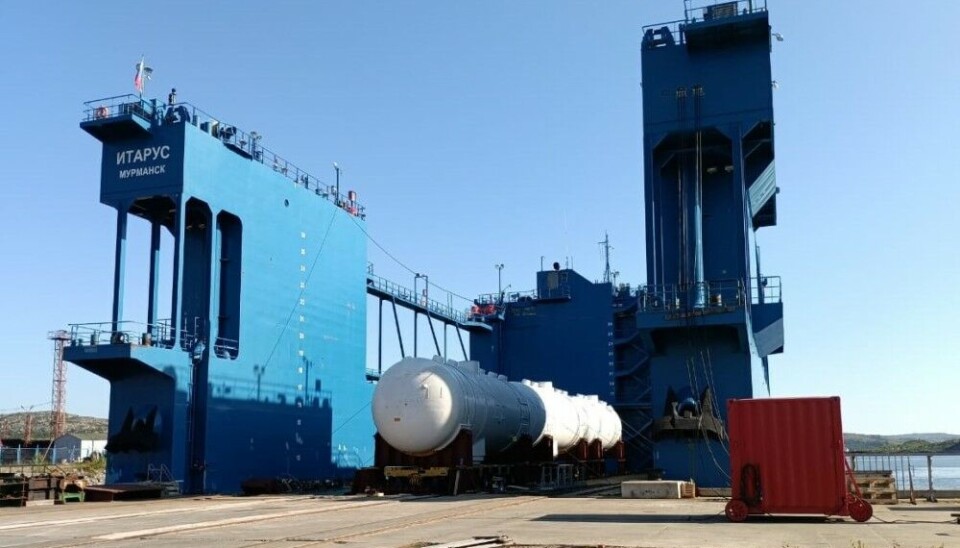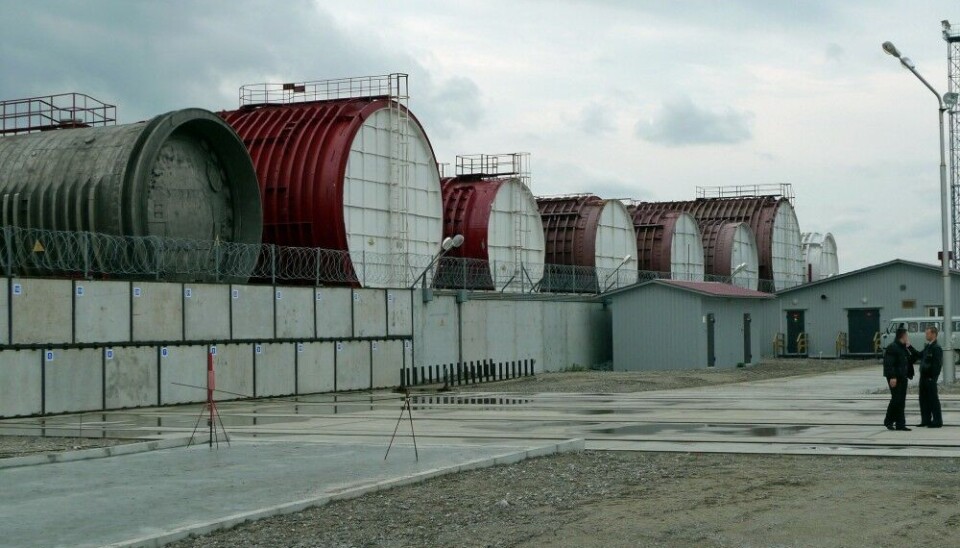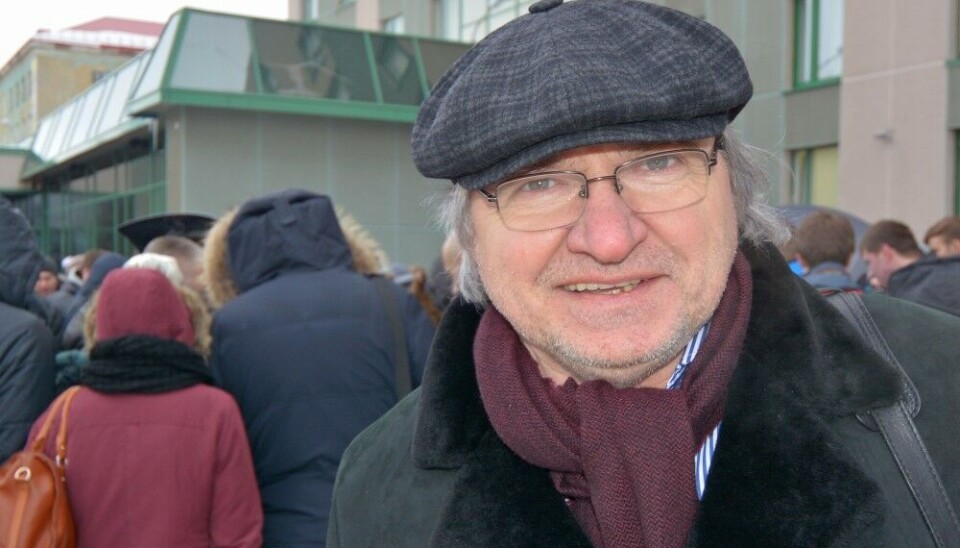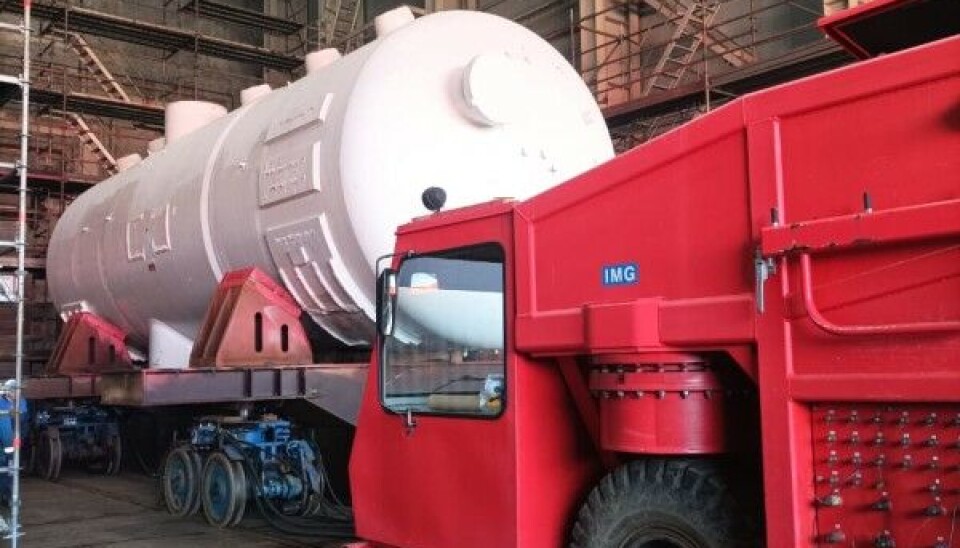
First radioactive waste from southern Russia arrives at Kola Peninsula
When Western donors agreed to pay for construction of radioactive waste treatment facilities in the Murmansk region no one had in mind it could turn out to be a nation-wide dumpsite.
It comes from Balakovo nuclear power plant in Saratov region southeast of Moscow. The giant steam generator is from the 1980 and is now replaced by a new. It can, however, not be disposed like any other piece of scrap metal. The generator is radioactive contaminated and need proper handling.
“For the first time in the history of domestic nuclear industry, we have begun to dispose of large-sized equipment from nuclear power plants,” says Vasily Tinin, Rosatom director for handling of radioactive waste, spent nuclear fuel and decommissioning of hazardous facilities.
Rosatom has posted his statement on Telegram.
“Until now, only reactor compartments of nuclear submarines and icebreakers were prepared for disposal in Saida Bay. Expanding the functionality of the existing site will allow it to be used more efficiently,” Tinin says.
Saida Bay is the huge onshore storage site built in the early 2000s with a €300 million grant from Germany. At the site, a larger workshop for cutting and compressing scrap metals is constructed.
Germany’s grant was part of the G8 Global Partnership against the Spread of Weapons and Materials of Mass Destruction. Other countries participated as well; Italy paid the nuclear waste ship Rossita and the floating dock Itarus. The U.S. and U.K. paid for scrapping submarines. So did Norway, Japan and South Korea.
In total, the G8 support to Russia amounted to several billion U.S. dollars before it all ended with Moscow’s decision to launch an all-out war on Ukraine in 2022.
100+ reactor compartments
More than 100 reactor compartments from Cold War era submarines are stored at the pad. So are a few containers with transuranium radioactive waste from the civilian service ship Lepse, nuclear icebreakers and some waste originating from navy service ships. The facility also handles larger amounts of solid radioactive waste from dumpsites like Andreeva Bay and naval shipyards on the Kola Peninsula and in Severodvinsk by the White Sea.
When built, the idea was never to import radioactive waste from other regions of Russia.

First of three
According to Rosatom, the steam generator that arrived to Saida Bay is the first of three from Balakovo nuclear power plant to be sent north. It came by train to Murmansk and was reloaded to the floating dock Itarus in Murmansk before sailing to its final destination.
Saida Bay is within the closed navy territories, just west of the strategically important submarine base of Gadzhiyevo. Distance to Russia’s border with Norway is less than 100 kilometers.
Such radioactive waste as the huge generator will have to be stored onshore for many decades before potentially later being prepared for deep-geological repositories. Such final repository does not exist anywhere in Russia.
Business
Exile nuclear expert Aleksandr Nikitin with the Bellona Foundation says it is no surprise that radioactive waste from civilian nuclear power plants in other parts of Russia are sent to Saida Bay.
“Rosatom is a business company,” Nikitin says to the Barents Observer.

Saida Bay belongs to a state directorate and Rosatom is a state-owned company.
“Within Rosatom, everyone lives by the rules of business. Military programs are financed by the state. All other money is commercial from internal and external business. In this case, the Directorate decided to make money on Rosenergoatom,” Nikitin says.
Rosenergoatom is the branch of Rosatom operating Russia’s nuclear power plants.
Nikitin knowns the processes from inside. Before the full-scale war on Ukraine, he was member of Rosatom’s public Council involving civic organisations in the policy making process for nuclear power utilisation and environmental protection.
The three generators from Balakovo could be a door opener for much more radioactive waste to be sent to the Kola Peninsula from other nuclear power plants across European Russia. There are potentially hundreds of thousands of cubic meter of radioactive waste that will need treatment and storage in the decades to come.
















